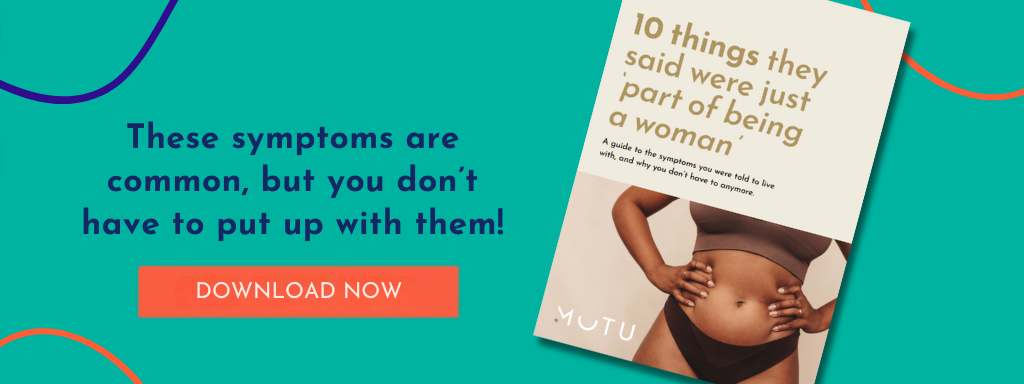We are told to do them in the grocery store, at red lights, and during sex. ‘Squeeze like you’re trying not to pee’, and you’d gain control of your bladder, be healthier, and have more fun in bed…
But is that the case? Are kegels always the answer and are kegels after birth good for you? How do you do a Kegel? Let’s break down what they are, and if they’re worth doing.
What is a kegel exercise?
A kegel exercise is when you contract (squeeze) the muscles of your vagina, anus, and urethra (separately or together) and then release them. Men can do kegels too by contracting their perineal muscles.
The ideal kegel is when you can squeeze and release your vaginal muscles, and then gently release them beyond their normal resting spot. A common cue is to imagine there are ten elevator levels you are ascending and descending – with an extra floor at the base while you contract and release. Work slowly, with control, and without force or breath-holding.
Side note: Like far too many things in women’s health, this exercise is named after a guy who ‘invented’ them.
What are kegels good for?
Kegels after birth can be great for reconnecting with the muscles and organs in your pelvic area. You’re working to regain control and confidence in your body.
As part of a bigger picture of integrating core restoration, strength, emotional and sexual health, Kegels can definitely help!
Is doing Kegels during pregnancy worth it? Understanding the benefits for birth
Can you do kegels whilst pregnant? Yes they can be a good exercise to practice in preparation for birthing unless you typically have a tight pelvic floor. Just as much as having physical strength in this area is great for birth, being able to be aware of how these muscles work and feel like you have some control over them can be a great tool when it comes time to push your baby out.
If you are planning on having a cesarean birth, Kegels can still help reduce your chances of post-surgery complications and the pelvic floor strain that happens during pregnancy.
Are Kegels after birth good? And can Kegels postpartum be a healthy part of your recovery?
If done correctly, Kegels after birth can be a healthy part of postpartum recovery. For a lot of women, it can feel good to connect with your vagina through these exercises but don’t worry if you can’t feel much at first. You may be numb and tender, so take your time and be patient as healing progresses.
If you had stitches, or a birth with forceps or a vacuum, tenderness is present, so just take your time.
Can Kegels be bad for you? Risks and considerations you should know
Kegels can be counterproductive if you feel too tight in your pelvic floor. You’d know this if sex becomes painful, if you have difficulties starting a stream of pee, if you are maybe having more UTIs, or if you are starting to have pelvic muscle spasms. What’s happening is that you are over-pulling the tissues in your pelvic brim, which shortens them and can actually make them weaker.
If you know you have a tight pelvic floor, it could be more helpful to practice relaxing, breathing, and stretching your pelvic floor muscles before birth instead of doing a lot of squeezing. Sitting in a low squat, using your breath to relax your pelvic floor, and visualizing more space and openness there can do a surprising lot to help! It sounds a little woo-woo, but it’s backed by evidence.
Kegels are not recommended if you have Hypertonic Pelvic Floor disorder. Check out this article on hypertonic pelvic floor to learn about the symptoms, causes, and treatments for this issue.
How to do Kegels like a pro: Tips for correct technique
One of the most common questions we get asked here at MUTU is, “How do I know if I’m doing Kegels correctly?”
The truth is there’s a lot more to Kegels than ‘squeezing as if you’re trying not to urinate’. The odd squeeze while you’re waiting at the bus stop is not going to cut it. Not only that, but squeeze too much and squeeze wrong and you could make it weaker.
If you tuck your butt and shorten the distance from the tailbone to the front of your pubis, then the effect may be a shorter, too-tight/hypertonic pelvic floor. It may seem ‘stronger’ for a while, but a shortened muscle isn’t an effective muscle. Weak isn’t always too loose. It can also be too tight/short.
You need to breathe right too.
This is where we focus and connect with our body. Maybe this sounds a little ‘far out’, but many women ‘cut off’ emotionally and physically from parts of their body after childbirth. It doesn’t feel as sensitive, sexy or fun as it used to be. If you don’t like the way parts of your body look right now, or how they make you feel, then you’re going to find it much harder to reconnect those nerve pathways and encourage the muscles to do their job.
The most important part of doing your pelvic floor exercises is not to think of them as isolated squeezes, but as integral to your core strength, emotional and sexual well-being, as well as your self-confidence.
Exploring alternatives or modifications to Kegels after birth
The body is incredibly resilient and may move back to its pre-pregnancy feeling (more or less) after birth even without Kegels or other specific exercises for some. For most, though, pelvic floor exercises (done with care) are a normal and recommended part of postpartum healing.
The key message to take away is that it’s not just a squeeze. And squeezing hard won’t make them more effective. Core and pelvic floor focussed breathing and exercise is subtle, not forceful. You don’t hold your breath, or ‘suck in’ hard.
There are two phases to a good Kegel: the Contract… AND the Release.
The release is as, if not more, important! So be sure to focus on both.
MUTU shows you how, as this core and pelvic floor breathing technique is the foundation of the program’s success. Just click ‘Get Started’ at the top of the page to try for 10 days free!
Read more on how to do pelvic floor exercises here.
How will I know if they are helping?
Like any exercise, you’re probably not going to notice a difference right away. It usually takes a few weeks of daily practice for pelvic floor exercises to really make a difference.
You may see a change in the general sensations around your vagina after doing these exercises. Less pain, more sexual pleasure, and having more control over urination are usually the biggest signs that Kegels are working well for you.
What if kegels aren’t working for me?
If you feel that these exercises are making things worse for you, you might have a hypertonic pelvic floor issue, an infection, or something more serious. Kegels can help with incontinence and other pelvic floor dysfunction, but sometimes it’s necessary to seek more specialized care.
Your pelvic floor therapist, midwife, OBGYN, gastroenterologist, urologist, or GP might suggest something more than kegels if you’re not finding them helpful enough.
Learn more about the pelvic floor in our comprehensive overview here.













I have come across your site in serach of info to help me out. I am 25
weeks pregnant with my third baby. I have just discovered I have a mild
cyctocele and rectocele and now diastasis Recti. I am scared about the
Diastasis getting worse or making a hernia and wondering how this
effects my core strength and the cele’s. I want to do something about it
but am unsurse what.
Just wondering if you can guide me as to what to do, exercises etc. Is a
splint needed like the Tupler technique? there is so much info its all a confusing
Thanks so much,
Hi Sandy, so sorry i missed this one! Don’t be confused Honey – MuTu Focus is entirely gentle, effective + safe for you. No splinting – splinting or binding is DEFINITELY not recommended with pelvic organ prolapse – it’ll squeeze you like a tube of toothpaste… 🙁 Focus will be completely helpful throughout + beyond pregnancy.
I have come across your site in serach of info to help me out. I am 25
weeks pregnant with my third baby. I have just discovered I have a mild
cyctocele and rectocele and now diastasis Recti. I am scared about the
Diastasis getting worse or making a hernia and wondering how this
effects my core strength and the cele’s. I want to do something about it
but am unsurse what.
Just wondering if you can guide me as to what to do, exercises etc. Is a
splint needed like the Tupler technique? there is so much info its all a confusing
Thanks so much,
Hi Sandy, so sorry i missed this one! Don’t be confused Honey – MuTu Focus is entirely gentle, effective + safe for you. No splinting – splinting or binding is DEFINITELY not recommended with pelvic organ prolapse – it’ll squeeze you like a tube of toothpaste… 🙁 Focus will be completely helpful throughout + beyond pregnancy.